Here’s The Thing About The Air Nomads.
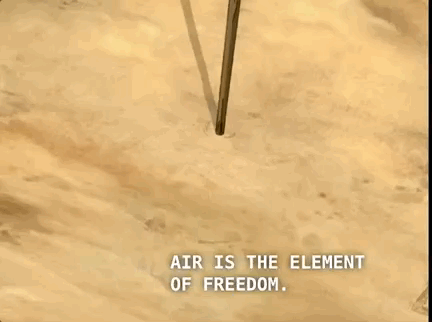


Here’s the thing about the air nomads.
I introduced a friend to ATLA a few nights ago, and they had only known two things about the entire show: the cabbage meme, and that Aang apparently wants to ride every large and dangerous animal he can possibly find. We got through the first five or so episodes, and my friend noted that Aang is exactly what a 12-year-old would be like if given godlike powers, and that this is literally just what he could do with airbending. He can’t even wield any of the other elements, and he’s one of the most powerful people on the planet, because he’s an airbender.
And that got me thinking.
This snippet from Bitter Work is one of the few pieces of concrete information we get about the airbenders, at least in ATLA. Iroh is explaining to Zuko how all four of the elements connect to the world and to each other.
Fire is the element of power, of desire and will, of ambition and the ability to see it through. Power is crucial to the world; without it, there’s no drive, no momentum, no push. But fire can easily grow out of control and become dangerous; it can become unpredictable, unless it is nurtured and watched and structured.
Earth is the element of substance, persistence, and enduring. Earth is strong, consistent, and blunt. It can construct things with a sense of permanence; a house, a town, a walled city. But earth is also stubborn; it’s liable to get stuck, dig in, and stay put even when it’s best to move on.
Water is the element of change, of adaptation, of movement. Water is incredibly powerful both as a liquid and a solid; it will flow and redirect. But it also will change, even when you don’t want it to; ice will melt, liquid will evaporate. A life dedicated to change necessarily involves constant movement, never putting down roots, never letting yourself become too comfortable.
We see only a few flashbacks to Aang’s life in the temples, and we get a sense of who he was and what kind of upbringing he had.

This is a preteen with the power to fucking fly. He’s got no fear of falling, and a much reduced fear of death. There’s a reason why the sages avoid telling the new avatar their status until they turn sixteen; could you imagine a firebender, at twelve years old, learning that they were going to be the most powerful person in the whole world? Depending on that child, that could go so badly.
But the thing about Aang, and the thing about the Air Nomads, is that they were part of the world too. They contributed to the balance, and then they were all but wiped out by Sozin. What was lost, there? Was it freedom? Yes, but I think there’s something else too, and it’s just yet another piece of the utter brilliance of the worldbuilding of ATLA.
To recap: we have power to push us forward; we have stability to keep us strong; we have change to keep us moving.
And then we have this guy.

The air nomads brought fun to the world. They brought a very literal sense of lightheartedness.
Sozin saw this as a weakness. I think a lot of the world did, in ATLA. Why do the Air Nomads bother, right? They’re just up there in their temples, playing games, baking pies in order to throw them as a gag. As Iroh said above, they had pretty great senses of humour, and they didn’t take themselves too seriously.
But that’s a huge part of having a world of balance and peace.
It’s not just about power, or might, or the ability to adapt. You can have all of those, but you also need fun. You need the ability to be vulnerable, to have no ambitions beyond just having a good day. You need to be able to embrace silliness, to nurture play, to have that space where a very specific kind of emotional growth can occur. Fun makes a hard life a little easier. Fun makes your own mortality a little less frightening to grasp. Fun is the spaces in between, that can’t be measured by money or military might. Fun is what nurtures imagination, allows you to see a situation in a whole new light, to find new solutions to problems previously considered impossible.
Fun is what makes a stranger into a friend, rather than an enemy.
Fun helps you see past your differences.
Fun is what fuels curiosity and openmindedness.
Fun is the first thing to die in a war.
More Posts from Ghiblibiotch and Others
do the spiderverse kids all have. slightly different meme cultures
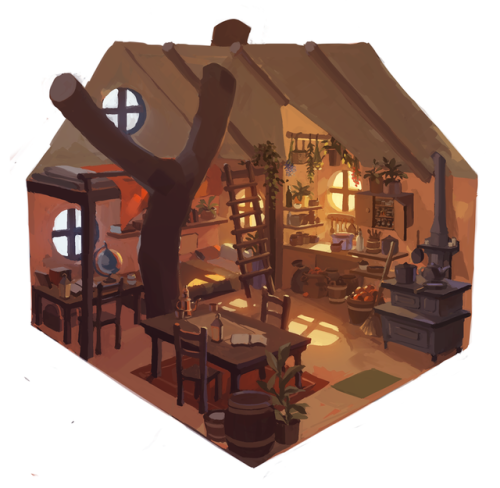
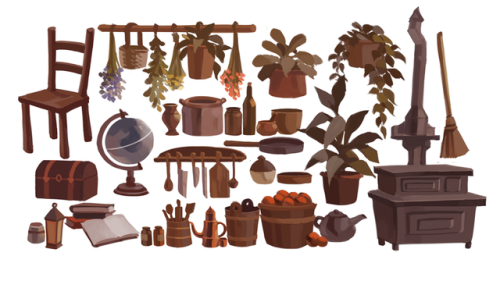

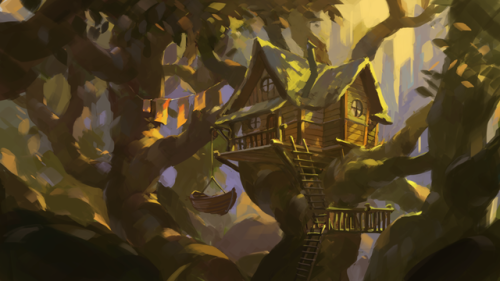
A treehouse for a little duo in the woods :)
Rick Riordan won a Stonewall award today
for his second Magnus Chase book, due to the inclusion of the character Alex Fierro who is gender fluid. This was the speech he gave, and it really distills why I love this author and his works so much, and why I will always recommend his works to anyone and everyone.
“Thank you for inviting me here today. As I told the Stonewall Award Committee, this is an honor both humbling and unexpected.
So, what is an old cis straight white male doing up here? Where did I get the nerve to write Alex Fierro, a transgender, gender fluid child of Loki in The Hammer of Thor, and why should I get cookies for that?
These are all fair and valid questions, which I have been asking myself a lot.
I think, to support young LGBTQ readers, the most important thing publishing can do is to publish and promote more stories by LGBTQ authors, authentic experiences by authentic voices. We have to keep pushing for this. The Stonewall committee’s work is a critical part of that effort. I can only accept the Stonewall Award in the sense that I accept a call to action – firstly, to do more myself to read and promote books by LGBTQ authors.
But also, it’s a call to do better in my own writing. As one of my genderqueer readers told me recently, “Hey, thanks for Alex. You didn’t do a terrible job!” I thought: Yes! Not doing a terrible job was my goal!
As important as it is to offer authentic voices and empower authors and role models from within LGBTQ community, it’s is also important that LGBTQ kids see themselves reflected and valued in the larger world of mass media, including my books. I know this because my non-heteronormative readers tell me so. They actively lobby to see characters like themselves in my books. They like the universe I’ve created. They want to be part of it. They deserve that opportunity. It’s important that I, as a mainstream author, say, “I see you. You matter. Your life experience may not be like mine, but it is no less valid and no less real. I will do whatever I can to understand and accurately include you in my stories, in my world. I will not erase you.”
People all over the political spectrum often ask me, “Why can’t you just stay silent on these issues? Just don’t include LGBTQ material and everybody will be happy.” This assumes that silence is the natural neutral position. But silence is not neutral. It’s an active choice. Silence is great when you are listening. Silence is not so great when you are using it to ignore or exclude.
But that’s all macro, ‘big picture’ stuff. Yes, I think the principles are important. Yes, in the abstract, I feel an obligation to write the world as I see it: beautiful because of its variations. Where I can’t draw on personal experience, I listen, I read a lot – in particular I want to credit Beyond Magenta and Gender Outlaws for helping me understand more about the perspective of my character Alex Fierro – and I trust that much of the human experience is universal. You can’t go too far wrong if you use empathy as your lens. But the reason I wrote Alex Fierro, or Nico di Angelo, or any of my characters, is much more personal.
I was a teacher for many years, in public and private school, California and Texas. During those years, I taught all kinds of kids. I want them all to know that I see them. They matter. I write characters to honor my students, and to make up for what I wished I could have done for them in the classroom.
I think about my former student Adrian (a pseudonym), back in the 90s in San Francisco. Adrian used the pronouns he and him, so I will call him that, but I suspect Adrian might have had more freedom and more options as to how he self-identified in school were he growing up today. His peers, his teachers, his family all understood that Adrian was female, despite his birth designation. Since kindergarten, he had self-selected to be among the girls – socially, athletically, academically. He was one of our girls. And although he got support and acceptance at the school, I don’t know that I helped him as much as I could, or that I tried to understand his needs and his journey. At that time in my life, I didn’t have the experience, the vocabulary, or frankly the emotional capacity to have that conversation. When we broke into social skills groups, for instance, boys apart from girls, he came into my group with the boys, I think because he felt it was required, but I feel like I missed the opportunity to sit with him and ask him what he wanted. And to assure him it was okay, whichever choice he made. I learned more from Adrian than I taught him. Twenty years later, Alex Fierro is for Adrian.
I think about Jane (pseudonym), another one of my students who was a straight cis-female with two fantastic moms. Again, for LGBTQ families, San Francisco was a pretty good place to live in the 90s, but as we know, prejudice has no geographical border. You cannot build a wall high enough to keep it out. I know Jane got flack about her family. I did what I could to support her, but I don’t think I did enough. I remember the day Jane’s drama class was happening in my classroom. The teacher was new – our first African American male teacher, which we were all really excited about – and this was only his third week. I was sitting at my desk, grading papers, while the teacher did a free association exercise. One of his examples was ‘fruit – gay.’ I think he did it because he thought it would be funny to middle schoolers. After the class, I asked to see the teacher one on one. I asked him to be aware of what he was saying and how that might be hurtful. I know. Me, a white guy, lecturing this Black teacher about hurtful words. He got defensive and quit, because he said he could not promise to not use that language again. At the time, I felt like I needed to do something, to stand up especially for Jane and her family. But did I make things better handling it as I did? I think I missed an opportunity to open a dialogue about how different people experience hurtful labels. Emmie and Josephine and their daughter Georgina, the family I introduce in The Dark Prophecy, are for Jane.
I think about Amy, and Mark, and Nicholas … All former students who have come out as gay since I taught them in middle school. All have gone on to have successful careers and happy families. When I taught them, I knew they were different. Their struggles were greater, their perspectives more divergent than some of my other students. I tried to provide a safe space for them, to model respect, but in retrospect I don’t think I supported them as well as I could have, or reached out as much as they might have needed. I was too busy preparing lessons on Shakespeare or adjectives, and not focusing enough on my students’ emotional health. Adjectives were a lot easier for me to reconcile than feelings. Would they have felt comfortable coming out earlier than college or high school if they had found more support in middle school? Would they have wanted to? I don’t know. But I don’t think they felt it was a safe option, which leaves me thinking that I did not do enough for them at that critical middle school time. I do not want any kid to feel alone, invisible, misunderstood. Nico di Angelo is for Amy, and Mark and Nicholas.
I am trying to do more. Percy Jackson started as a way to empower kids, in particular my son, who had learning differences. As my platform grew, I felt obliged to use it to empower all kids who are struggling through middle school for whatever reason. I don’t always do enough. I don’t always get it right. Good intentions are wonderful things, but at the end of a manuscript, the text has to stand on its own. What I meant ceases to matter. Kids just see what I wrote. But I have to keep trying. My kids are counting on me.
So thank you, above all, to my former students who taught me. Alex Fierro is for you.
To you, I pledge myself to do better – to apologize when I screw up, to learn from my mistakes, to be there for LGBTQ youth and make sure they know that in my books, they are included. They matter. I am going to stop talking now, but I promise you I won’t stop listening.”
paprika hendl
This is the recipe I’ve been using for years for Paprikash. (a.k.a. Paprikás Csirke / paprika hendl) In respose to the current hype, I figured I’d share it with you all. Makes 6 servings.
Ingredients
Oil, butter or lard – 2 tablespoons
Chicken thighs, deboned & skin-on – 2 ½ to 3 pounds
Onions, thinly sliced – 2 (or 3 if small)
Hungarian sweet paprika – ¼ cup
Korean chili flakes – 2 teaspoons
Pastry flour – 2 tablespoons
Poultry stock, unsalted – 1 ½ cups
Red bell peppers, diced – 2
Salt and pepper – to taste
Sour cream – 1 cup
Lemon juice (optional) – 1 tablespoon
Directions
Heat the oil over medium-high flame in a large cast iron skillet. Add the chicken skin-side down and brown until skin is crispy, about 7 minutes. Remove to a board, and cut into bite-size pieces.
Remove any excess oil leaving about 2 tablespoons and add the onions. Sauté the onions until wilted and beginning to brown. Stir in the paprika and flour and cook for 1 to 2 minutes.
Whisk in the stock in portions, breaking up any lumps. Add the browned chicken pieces, bell peppers. and the salt and pepper. Bring to a boil, then reduce heat to low, cover and simmer for 25 to 30 minutes, or until the chicken is cooked through and tender.
Stir in the sour cream and lemon juice if using. Adjust seasoning and reheat over low flame. Serve hot with noodles or gnocchi.
Variations
Mushrooms can be added with the stock.
Kosher version: Instead of sour cream, use 50% more flour and 33% more lemon juice. For passover use potato starch instead of flour.
Really useful
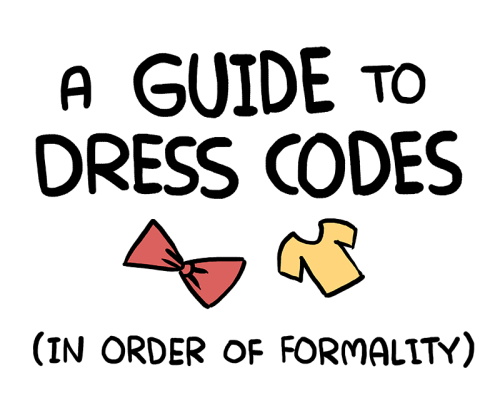
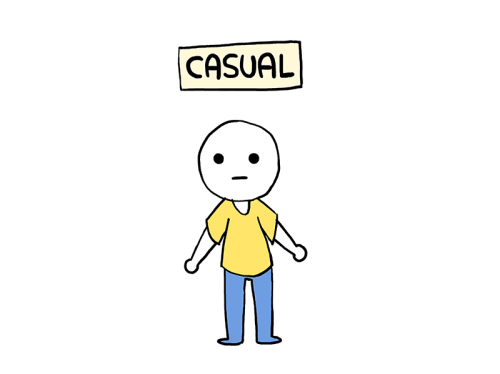
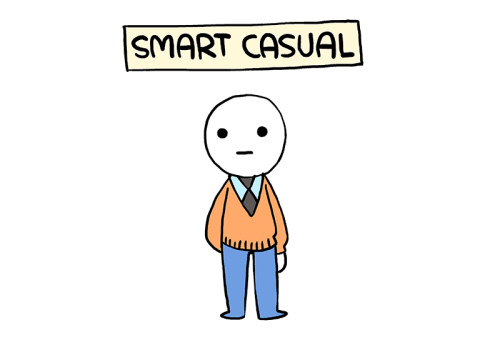
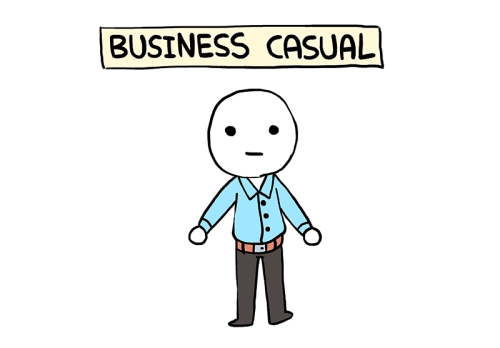
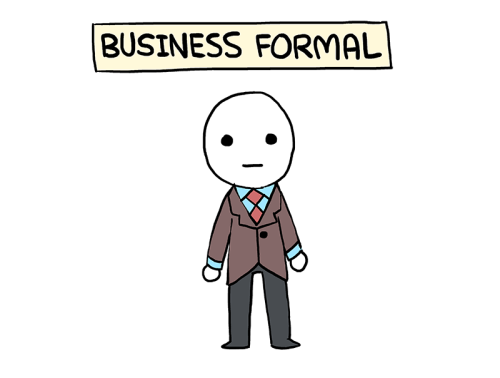
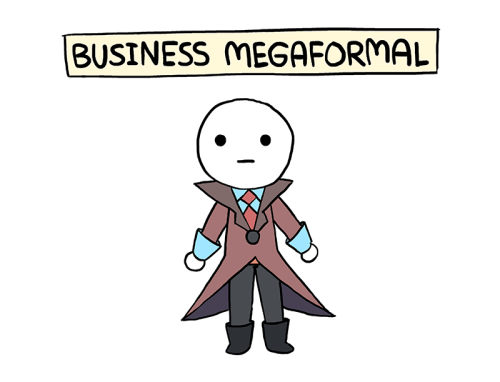
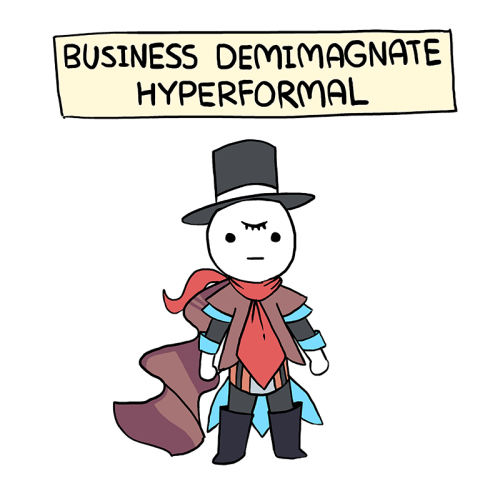
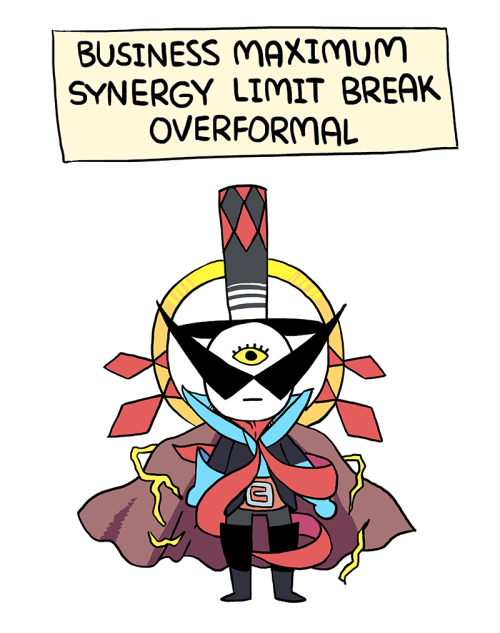
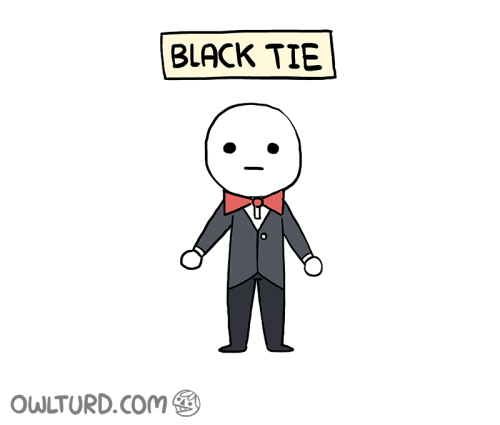
A Guide to Dress Codes
image / twitter / facebook / patreon
do the spiderverse kids all have. slightly different meme cultures
Cock
Based on your likes!
Why am I crying



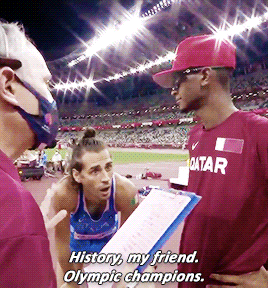






Mutaz Essa Barshim and Gianmarco Tamberi decided to share the title in the men’s high jump.
Today I learned about a couple that decided to rebuild their deserted piece of land of 600 hectares in Aimorés, Brazil. They planted more than 2 million tree saplings. As a result, the site has 293 plant species, 172 bird species and 33 animal species, some of which were on the verge of extinction. It only took 18 years!
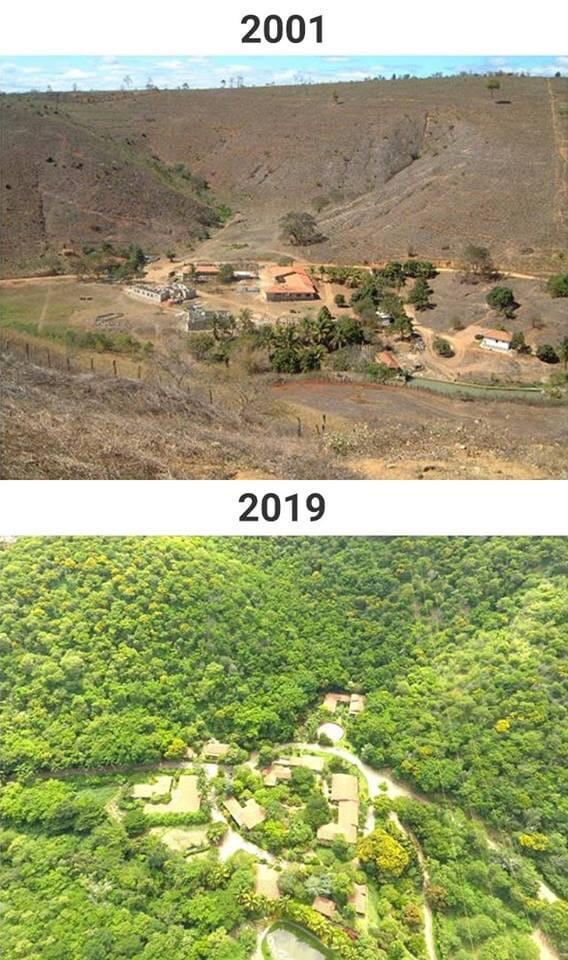
In the early 1990s, Brazilian photo-journalist Sebastião Ribeiro Salgado was stationed in Rwanda to cover the horrific accounts of Rwanda genocide. The on-ground experience left him traumatised. In 1994, he was returning to his home in Minas Gerais, Brazil, with a heavy heart, hoping to find solace in the lap of a lush green forest, where he had grown up.
But, instead, he found dusty, barren land for miles and miles, in place of the forest. In only a few years, his beautiful hometown underwent rampant deforestation, leaving it fallow and devoid of all the wildlife. For him, everything was destroyed. “The land was as sick as I was. Only about 0.5% of the land was covered in trees,’ he shared in an interview with The Guardian. Salgado was shattered.
Saldago’s Wife Wanted to Recreate The Forest
It was at this time that Salgado’s wife Lélia made a near-impossible proposal. She expressed her wish to replant the entire forest. Salgado supported her idea, and together the couple set out on a heroic mission. Brazil Photographer Forest
Salgado bought an abandoned cattle ranch from his parents and started building a network of enthusiastic volunteers and partners who would fund and sustain their mammoth project. In 1998, the couple founded Instituto Terra – the organisation which tirelessly worked to bring a forest back to life.

PNHR Bulcão Farm | by Weverson Rocio – 2012
Salgado sowed the first seed in December 1999. The couple hired around 24 workers in the beginning and was later joined by numerous volunteers over the years. They worked day and night – from uprooting the invasive weeds to planting new seedlings. Soon, their hard work bore fruit as tropical trees native to the region started flourishing in the area. They received a donation of over one lakh saplings which gave rise to a dense forest. The handcrafted forest comprises mostly of local arboreal and shrub varieties. Latest satellite imagery revealed how a soothing green forest cover has enveloped the area which once was a devastating arid eyesore.Since 1998, they have planted more than 2 million saplings of 293 species of trees and rejuvenated 1,502 acres of tropical forest. The biodiversity-rich zone has recently been declared as a Private Natural Heritage Reserve (PNHR).
The Impact of Salgado’s Forest
The afforestation project, which is undoubtedly one of the greatest environmental initiatives in the world, has also helped to control soil erosion and revived the natural springs in the area. Eight water springs which once dried up, flow at around 20 litres per minute at present, relieving the drought-prone region of its woes. Salgado’s forest also happens to solve the much-debated notion about climate change, proving that the trend can be reversed if tried. His forest has resulted in causing more rainfall to the area and cooler weather, bringing a drastic and desirable change in the climate.

Instituto Terra’s Fauna | by Leonardo Merçon – 2012
The most important positive aspect of the forest till now has to be the return of the lost fauna. More than 172 species of birds, 33 species of mammals, 15 species of amphibians and reptiles have been spotted in the forest interiors, something which was beyond imagination two decades ago. Many of the plant and animal species in his forest actually feature on the endangered list.
Efforts For Good
Climate change is a harsh reality. Mankind is bearing the brunt of the relentless destruction they inflicted on the planet. Yet, people like Salgado and Lélia fill us with hope, proving that patience and persistence can be our keys to heal the wounds of nature. If two people can create a 1502-acre forest in just 20 years, then imagine how much can be done if everyone comes together to protect the environment. It must be reminded that for every tree we plant, we are adding 118 kgs of oxygen to the air every year, and reducing the carbon footprint by 22 kgs.
Efforts For Good urges all the readers to actively engage in planting trees and gradually turn this into a fixed habit.
Sources: http://www.scienceinsanity.com/2019/03/brazilian-couple-created-1502-acre.html
https://www.reddit.com/r/interestingasfuck/comments/bg0ebn/a_couple_decided_to_rebuild_their_deserted_piece/
-
 kerim-08 reblogged this · 6 days ago
kerim-08 reblogged this · 6 days ago -
 lesbianlioncourt liked this · 6 days ago
lesbianlioncourt liked this · 6 days ago -
 canichangemyblogname reblogged this · 6 days ago
canichangemyblogname reblogged this · 6 days ago -
 lunaticw1tch reblogged this · 1 week ago
lunaticw1tch reblogged this · 1 week ago -
 lunaticw1tch liked this · 1 week ago
lunaticw1tch liked this · 1 week ago -
 asthrapolaris liked this · 1 week ago
asthrapolaris liked this · 1 week ago -
 stormii-and-cha0s reblogged this · 1 week ago
stormii-and-cha0s reblogged this · 1 week ago -
 lilbudgie liked this · 1 week ago
lilbudgie liked this · 1 week ago -
 brightisthedawn reblogged this · 1 week ago
brightisthedawn reblogged this · 1 week ago -
 sapphireflame reblogged this · 1 week ago
sapphireflame reblogged this · 1 week ago -
 sexy-soft-catgirl-kaiju reblogged this · 2 weeks ago
sexy-soft-catgirl-kaiju reblogged this · 2 weeks ago -
 sexy-soft-catgirl-kaiju liked this · 2 weeks ago
sexy-soft-catgirl-kaiju liked this · 2 weeks ago -
 what-amievendoingg liked this · 2 weeks ago
what-amievendoingg liked this · 2 weeks ago -
 scenicphoenix reblogged this · 2 weeks ago
scenicphoenix reblogged this · 2 weeks ago -
 kuroganetzuki liked this · 2 weeks ago
kuroganetzuki liked this · 2 weeks ago -
 tabbycatsdream reblogged this · 2 weeks ago
tabbycatsdream reblogged this · 2 weeks ago -
 ujustgottalaugh reblogged this · 2 weeks ago
ujustgottalaugh reblogged this · 2 weeks ago -
 quadtator-lawful-evil reblogged this · 2 weeks ago
quadtator-lawful-evil reblogged this · 2 weeks ago -
 raelyn-dreams liked this · 2 weeks ago
raelyn-dreams liked this · 2 weeks ago -
 a-breath-of-air liked this · 2 weeks ago
a-breath-of-air liked this · 2 weeks ago -
 avatarangel0723 liked this · 2 weeks ago
avatarangel0723 liked this · 2 weeks ago -
 daddymaddy001 liked this · 2 weeks ago
daddymaddy001 liked this · 2 weeks ago -
 shadsasaur reblogged this · 2 weeks ago
shadsasaur reblogged this · 2 weeks ago -
 kriteq liked this · 2 weeks ago
kriteq liked this · 2 weeks ago -
 undermortal reblogged this · 2 weeks ago
undermortal reblogged this · 2 weeks ago -
 undermortal liked this · 2 weeks ago
undermortal liked this · 2 weeks ago -
 dopeherorancheggs liked this · 3 weeks ago
dopeherorancheggs liked this · 3 weeks ago -
 retalic liked this · 3 weeks ago
retalic liked this · 3 weeks ago -
 thatwitchrevan liked this · 3 weeks ago
thatwitchrevan liked this · 3 weeks ago -
 lockejhaven reblogged this · 3 weeks ago
lockejhaven reblogged this · 3 weeks ago -
 lockejhaven liked this · 3 weeks ago
lockejhaven liked this · 3 weeks ago -
 shabbycat58 liked this · 3 weeks ago
shabbycat58 liked this · 3 weeks ago -
 baerenh0ehle reblogged this · 3 weeks ago
baerenh0ehle reblogged this · 3 weeks ago -
 baerenh0ehle liked this · 3 weeks ago
baerenh0ehle liked this · 3 weeks ago -
 sketchbooksandwitch liked this · 3 weeks ago
sketchbooksandwitch liked this · 3 weeks ago -
 silentwonderlocks liked this · 3 weeks ago
silentwonderlocks liked this · 3 weeks ago -
 unsentinvitation reblogged this · 3 weeks ago
unsentinvitation reblogged this · 3 weeks ago -
 wakitzu liked this · 3 weeks ago
wakitzu liked this · 3 weeks ago -
 talypo liked this · 3 weeks ago
talypo liked this · 3 weeks ago -
 smoke-spear reblogged this · 3 weeks ago
smoke-spear reblogged this · 3 weeks ago -
 smoke-spear liked this · 3 weeks ago
smoke-spear liked this · 3 weeks ago -
 reve-de-nuit liked this · 3 weeks ago
reve-de-nuit liked this · 3 weeks ago -
 hydrangeyes reblogged this · 3 weeks ago
hydrangeyes reblogged this · 3 weeks ago -
 hydrangeyes liked this · 3 weeks ago
hydrangeyes liked this · 3 weeks ago -
 holdiethemoldie liked this · 3 weeks ago
holdiethemoldie liked this · 3 weeks ago -
 willo-or-something reblogged this · 3 weeks ago
willo-or-something reblogged this · 3 weeks ago
